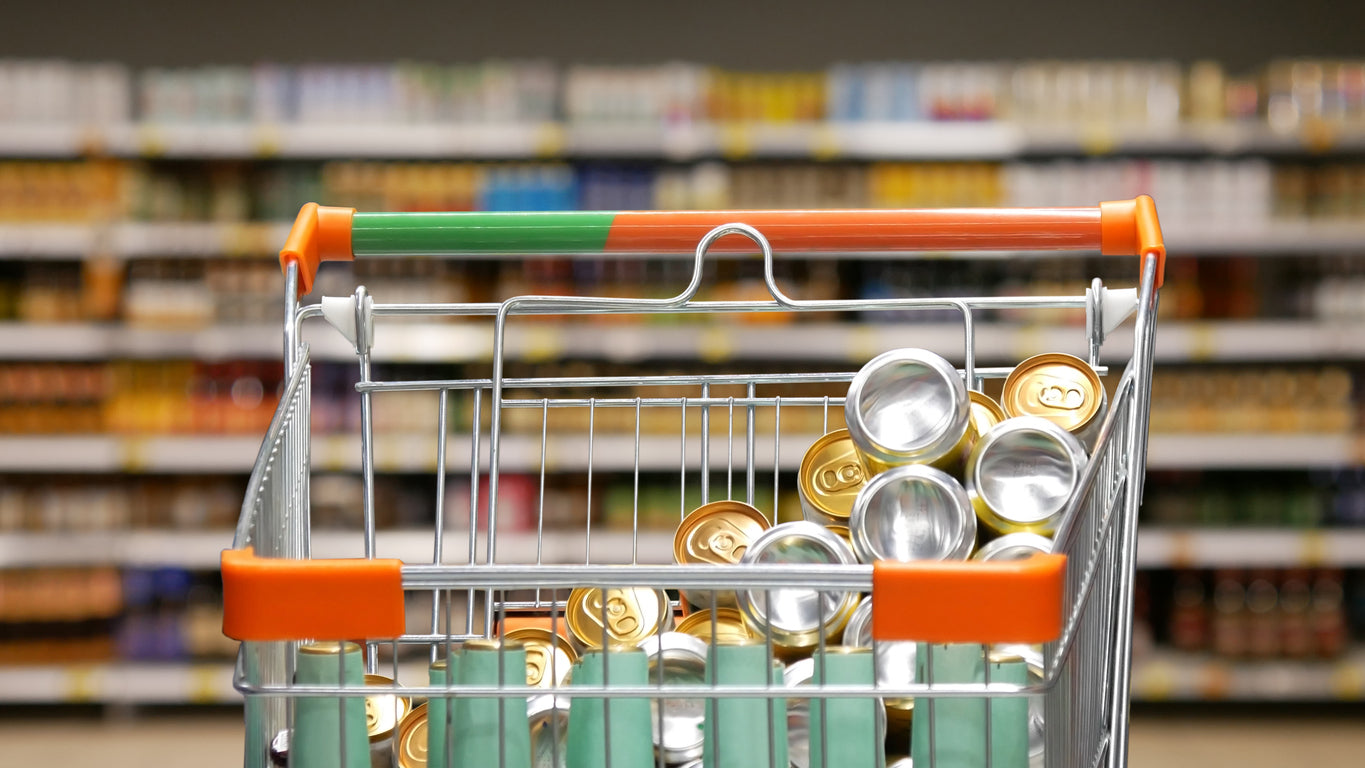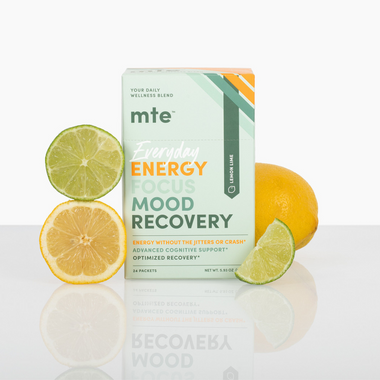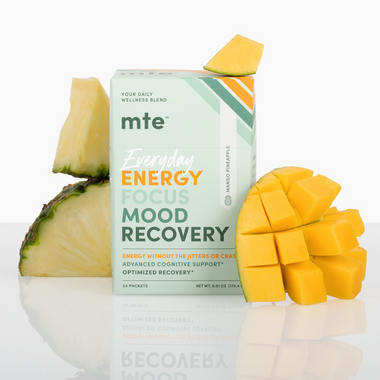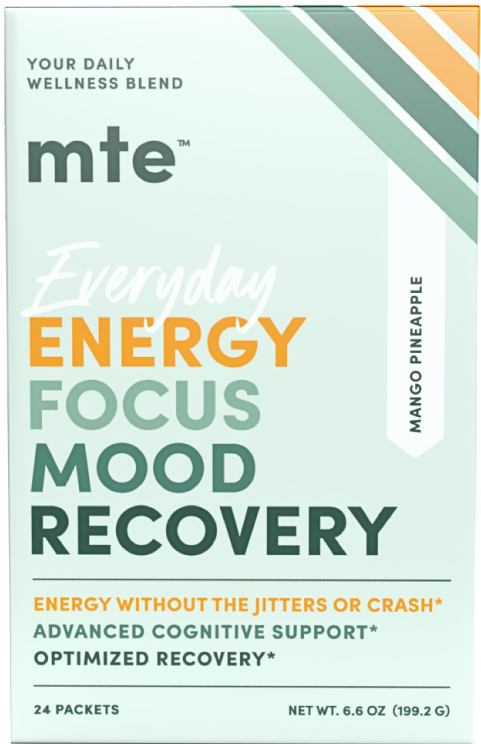
The Modern Energy Drink: Past, Present & Paraxanthine
Ever snapped open a can of Celsius® or shaken up your protein powder pre-workout and wondered what all went into it? Like, not at the factory – like, who decided sugar, caffeine, and creatine were the way to great fitness and mental focus. How long have people been looking for a solution to exhaustion? How did we get from “How do I try not to get murdered by a hyaenodon” to “How do I stay awake without caffeine”?
For a complete history of energy drinks, check out our article: The Evolution of Energy Drinks: From Paleolithic to Post-Modern . In this article, we’re going to focus mostly on the recent history of energy drinks and where innovations in healthy caffeine alternatives will lead the industry:
OG Energy Boosters: 50,000 Years of Natural Energy
It all started 50,000 years ago in Australia with an energy boosting immunity tonic called Bush Tea. The Neanderthals and Denisovans were still walking around! Maybe also this guy. At the same time, another herbal tonic may have emerged in Africa, which was also used for vitality and stamina.
8000 years ago in South America, the coca plant was discovered to work wonders for energy and fatigue. 6000 years ago in the Middle East, ashwagandha emerged as a cure-all tonic, and it’s never left the medicinal record since. Ma huang and green tea showed up a couple millennia later, then cannabis tea, chocolate, ginseng, and tobacco, across both the New World and Old.
By the time coffee emerged around 1000 years ago, every corner of the world already had their own staple feel-good drink. And throughout imperialism, coffee, tea, and tobacco became the dominant natural energy boosters. This remained until the Industrial Revolution, when we started doing energy drink alchemy in the lab.
The Industrial Revolution: 2 Centuries of Creepy Chemicals
Here’s where things started to get weird in the history of energy drinks. Remember ma huang? Yeah, that’s how they synthesized ephedra and amphetamines in the late 19th century. In the same decade, Coca-Cola started putting cocaine in their soda. And everybody buzzed their way into the 20th century, absolutely cracked out on things that are illegal now… like actual crack.
The 1910s and 20s served as more proof we are too willing to just try things without understanding the risks first. They actually put radium in energy drinks in the 1910s. And in the 1920s, ephedrine was first put into drinks. Ephedrine energy drinks were used during WWII to keep soldiers awake through the night. Not addictive at all; totally didn’t cause any problems for anyone.
While coffee and tea still dominated and likely always will, the 1960s to 80s were a time of rapid development in the energy drink world. These were our proto-Monster® days. Lipotivan-D was the first commercially successful energy drink in history, released in Japan in 1962. It had a bit of caffeine, a horse-sized dose of taurine, and a bunch of B vitamins that affected the energy boost.
In the 1970s, we see the progenitor of Red Bull® emerge. Krating Daeng was an energy drink local to Thailand that contained a heart-stopping amount of caffeine and taurine. When a travelling businessman bought one on a whim to deal with his jet lag, he realized this product would work well in European and North American sleepless, overworked societies.
The Last 40 Years: Becoming Disillusioned with Caffeine
The modern history of energy drinks begins with Jolt Cola in 1985, which boasted twice the caffeine of Coke and Pepsi. Shortly after, our OG Redbull comes on the scene touting 285mg of caffeine per serving. Which is a lot. But it’s better than ephedrine, radium, and street drugs, so we’ll let it go for a minute.
In the 90s, ephedrine was banned in all dietary supplements, and shortly after, Nos® releases their caffeine, guarana, and taurine-based energy drinks. In less than 15 years, pretty much all the staple brands we know today emerged, each touting their own highly concentrated mixture of energy boosters.
And then we started wondering about all that caffeine and all those chemicals. We deep dive caffeine dangers in another article: MTE vs The World: The Energy Drink Market is Falling Short. But suffice to say by this point in energy drink history we’re all pretty aware caffeine, guarana, taurine, and a metric-ton of B vitamins do not come without their side effects and risks.
Then we realized all the tech used to synthesized concentrates of caffeine and other chemicals to make herbal ingredients easier to incorporate into food production. And that’s when ashwagandha, maca, ginseng, eleuthero, and other ancient herbs started to re-enter the lives of the Western World.
The US is one of the most unregulated countries when it comes to food safety. We’ll say to only drink max 400mg of caffeine a day but then we’ll market 250mg-per-can energy drinks in 2-for-1 sales. Then there’s that whole thing where 30+ countries have banned many ingredients used in US foods. It’s probably nothing.
Thankfully, the rise of health and wellness products brought along with it clinical research on the safety and efficacy of these new-old herbs as caffeine alternatives for natural energy. This has led to a big mess (in a good way) of wellness companies vying for the ideal combination of herbs, natural compounds, and new food technologies to create caffeine-free supplement drinks that don’t come with risks of stopping your heart, disrupting your sleep, or producing a panic attack.
Future Perspectives & Paraxanthine: Nootropic Energy, No Stimulants
We wouldn’t say the energy drink market has necessarily been at a standstill in the last decade, but there hasn’t been a lot of forward motion on finding an as-good or better solution to our caffeine problem. Creatine? Don’t worry about your kidneys; you don’t need those. Dry scooping caffeine? Totally hasn’t resulted in young adults having full-on heart attacks.
So the struggle still exists, and it is real. But there’s a new alternative to caffeine called paraxanthine. And the crazy thing is that, in the 6000+ year history of energy drinks with caffeine, paraxanthine has been under our noses the whole time. Or in our livers. Whatever.
Paraxanthine is the main metabolite of caffeine. When caffeine is broken down in the liver, 80-85% of the byproduct is paraxanthine. This caffeine-derived nootropic offers a sustained, consistent energy boost without the overstimulated peak and steep crash of caffeine. Paraxanthine supplements are also safer than caffeine; in studies they don’t show toxicity at high doses, raise heart rate or blood pressure, elicit a stress response, or disrupt sleep.
And then there’s all the other cool stuff paraxanthine does. A series of studies indicates paraxanthine:
- improves response time and attention after physical exertion
- increases metabolism and fat burn (thermogenesis)
- promotes faster muscle growth
- improves endurance and energy expenditure
- increases dopamine levels (motivation and mood)
- improves memory, cognition, and focus
It sounds too good to be true, but this jack-of-all trades may be the ideal solution for mood enhancer drinks, brain fog and focus boosters, protein powders, stress relief drinks, etc. We like paraxanthine for all the things it does and all the things it doesn’t. And combined with those ancient herbs in their modern extract form, the future of energy drinks and daily wellness supplements looks bright. And it’s not going to take us another 50,000 years to get there.
Learn more about MTE’s ingredients and benefits with other articles from our Wellness Blog and visit our Shop for all the specs on this feel-good nootropic drink and reviews from happy customers. A few weeks into the best daily paraxanthine supplement available on the market and we’re sure you’ll become a convert.






